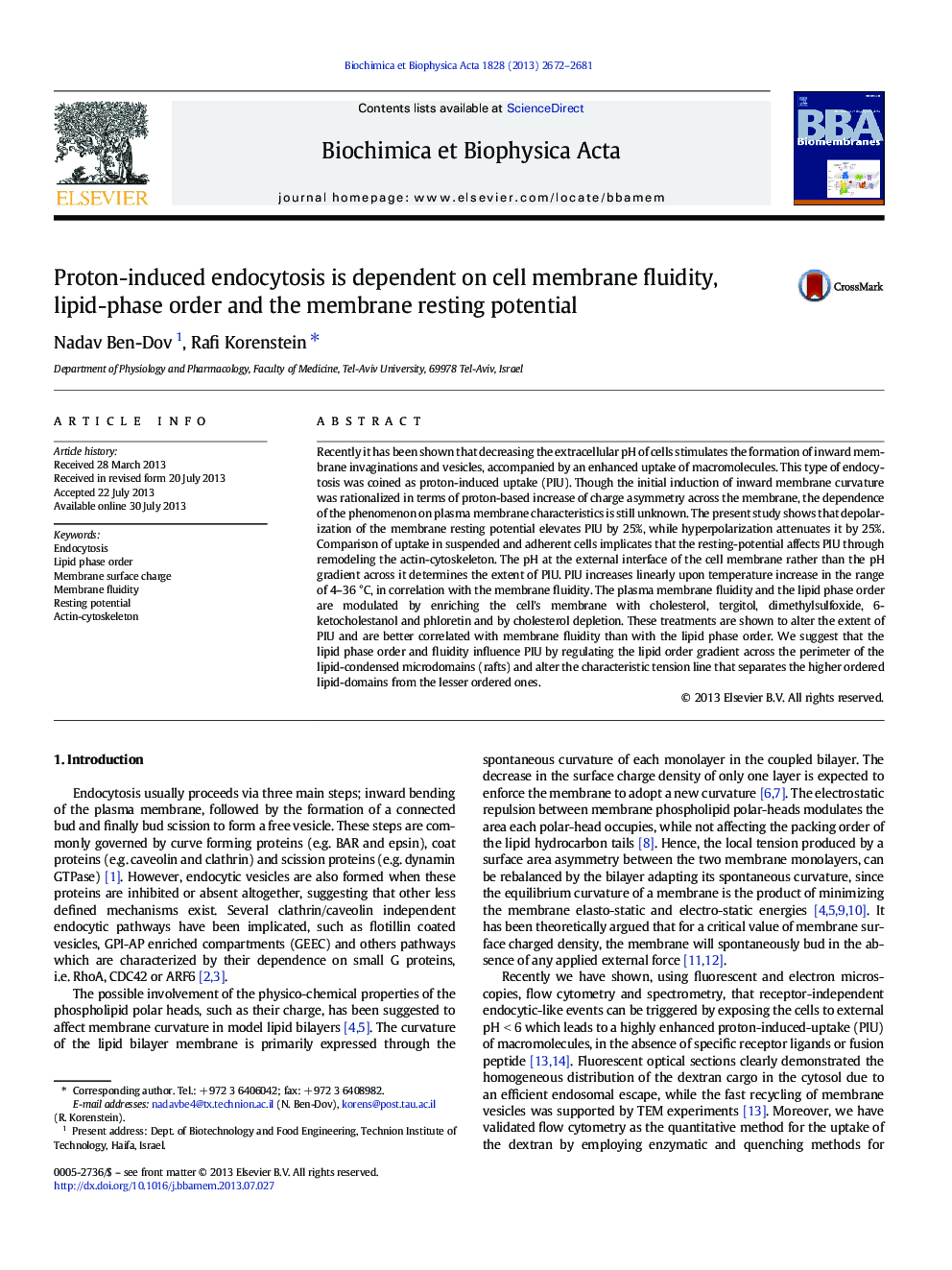| Article ID | Journal | Published Year | Pages | File Type |
|---|---|---|---|---|
| 1944311 | Biochimica et Biophysica Acta (BBA) - Biomembranes | 2013 | 10 Pages |
•High extracellular proton concentration can induce ligand-independent endocytosis.•Potential-dependent reorganization of actin modulate the proton-induced endocytosis.•Proton-induced endocytosis has linear correlation with the cells' temperature.•Plasma membrane fluidity and lipid order influence the proton-induced endocytosis.
Recently it has been shown that decreasing the extracellular pH of cells stimulates the formation of inward membrane invaginations and vesicles, accompanied by an enhanced uptake of macromolecules. This type of endocytosis was coined as proton-induced uptake (PIU). Though the initial induction of inward membrane curvature was rationalized in terms of proton-based increase of charge asymmetry across the membrane, the dependence of the phenomenon on plasma membrane characteristics is still unknown. The present study shows that depolarization of the membrane resting potential elevates PIU by 25%, while hyperpolarization attenuates it by 25%. Comparison of uptake in suspended and adherent cells implicates that the resting-potential affects PIU through remodeling the actin-cytoskeleton. The pH at the external interface of the cell membrane rather than the pH gradient across it determines the extent of PIU. PIU increases linearly upon temperature increase in the range of 4–36 °C, in correlation with the membrane fluidity. The plasma membrane fluidity and the lipid phase order are modulated by enriching the cell's membrane with cholesterol, tergitol, dimethylsulfoxide, 6-ketocholestanol and phloretin and by cholesterol depletion. These treatments are shown to alter the extent of PIU and are better correlated with membrane fluidity than with the lipid phase order. We suggest that the lipid phase order and fluidity influence PIU by regulating the lipid order gradient across the perimeter of the lipid-condensed microdomains (rafts) and alter the characteristic tension line that separates the higher ordered lipid-domains from the lesser ordered ones.
Graphical abstractFigure optionsDownload full-size imageDownload high-quality image (188 K)Download as PowerPoint slide
